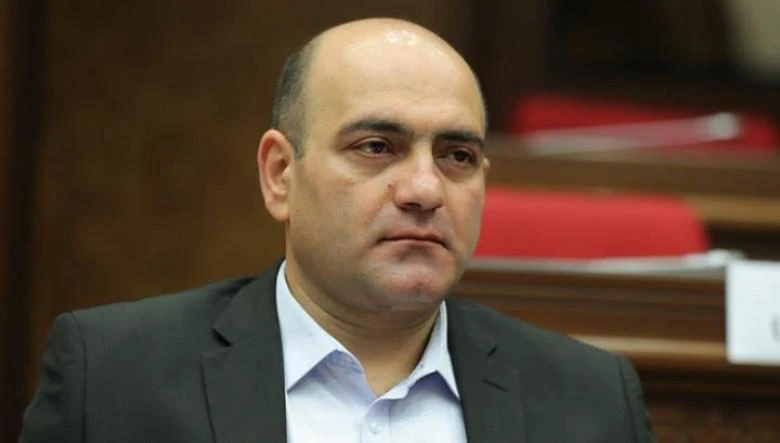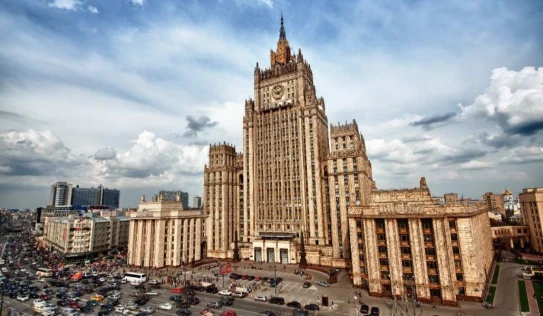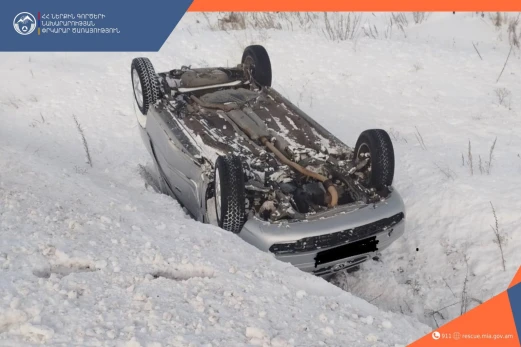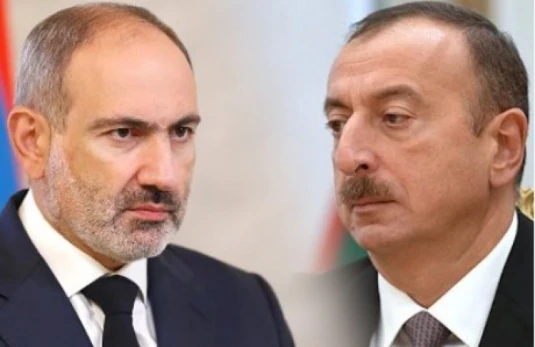"Fact" daily writes:
Armenia's state debt will grow to 53.5 percent of GDP next year. This was announced by the Minister of Finance during the discussion of the draft 2025 state budget in the National Assembly.
Before proceeding to the discussion of the 2025 state budget project, economist Tadevos Avetisyan, deputy of the NA "Armenia" faction, reminds that the absolute size of the state debt has doubled during the previous six years under these authorities.
"We have a state debt of more than 12 billion dollars, this is a fact. If we look at the periods from 1991 to 2018 and after 2018, we have a doubling of the public debt.
During the reign of these authorities, the average annual growth rate of the public debt has exceeded the average growth rate of the gross domestic product of our country, even in the event that in 2022, 2023, 2024, due to an external factor, the Russian-Ukrainian war, we had skyrocketing, higher than double-digit increases.
If it were not for that external factor, which has nothing to do with us, the authorities of the day did not make any positive efforts here, then we would now be in a deep debt crisis," says Avetisyan in a conversation with "Pasti".
He emphasizes that now these external factors are significantly weakening. "In the second half of this year, our economic activity decreased at least 2 times compared to the average of the previous 2.5 years.
The external factor was short-term, as a result of its weakening, it is already a fact that in the second half of the year we have not only a significant decrease in the economic activity index, but also a significant underperformance of planned tax revenues and state budget expenditures.
The weakening of the factor is also evidenced by the fact that this government predicts GDP growth in the next year's state budget to be two times less than what was recorded in the previous 2.5 years.
They know that the external factor weakens its positive influence, will disappear in a moment, and they have already put a modest economic growth as the basis of next year's state budget. About the 53.5 percent they mentioned. that's a pretty risky number.
There are significant factors that could lead to not a 53.5 percent debt-to-GDP ratio, but an even higher indicator, even bringing it closer to the risky threshold. What are those factors?
Ensuring a 5.5 percent growth of the gross domestic product will be extremely difficult, complicated and risky, considering the current and continuing negative trends. One of them is the deterioration of the structure of the economy, both in terms of foreign trade turnover and the economic structure of our country.
The dependence of foreign trade circulation on Russia is increasing significantly, financial dependence has also increased significantly. The next factor providing growth was remittances in foreign currency from abroad, the lion's share of which is again from Russia.
Next is the so-called "gold rush". From the second half of last year to the first half of this year, we re-exported Russian gold mainly to the United Arab Emirates.
This is no longer there, which has brought serious stress fluctuations on the development of the economy. The industry and the real sector of the economy of the Republic of Armenia is facing permanently deepening problems, and this can be seen from the statistics.
If we remove the artificial circulation of gold from the industry, we have a substantial reduction in the industry. This year, the high-tech sector recorded a decrease of about 10 percent. The agriculture sector has been in free fall for years.
They are significant difficulties in the economic structure. If we subtract the re-export of gold from our exports, our exports are not increasing, but decreasing, whereas in the previous two years it was growing exponentially.
By combining these negative factors, it becomes obvious that next year's 5.5 percent economic growth is a risky and rather difficult indicator to implement," the economist expresses his opinion.
He emphasizes that the state debt continues to grow exponentially even this year. "Next year, a high growth of the state debt is already predicted. This means that if we do not have a 5.5 percent GDP growth, which is inherently risky, on the other hand, we will have a planned increase in the state debt, in this case we will have a higher debt-to-GDP ratio, not 53.5 percent.
Exactly half of our public debt, slightly more, is external debt in foreign currency, reserve currencies. The president of the Central Bank and also the government at least do not rule out that the devaluation of the national currency will take place.
Our national currency has depreciated as a result of the influence of an external factor, when it weakens, we have the effect of devaluation of the national currency. If tendencies of devaluation of the national currency appear, our state debt expressed in AMD will increase as a result.
If the national currency depreciates, we will have an increase in the debt-to-GDP ratio. Not even extremely negative, but in the case of an average scenario, the 53.5 percent they mentioned will rise up to the risk threshold of 60 percent. These are our predictions, the rest is boundless populism, attributing positive and non-contributing things to them, throwing the consequences of their inaction and poor management here and there," our interlocutor notes.
The figures published by the statistical committee are worrying, according to which the agricultural sector registered a 1.8 percent growth in January-September of this year.
The development of this sector is of strategic importance for our country. For years, the authorities of the day spend huge amounts of money to implement new projects in the sector, but it turns out that we have no improvement.
"The agricultural programs implemented by them were exclusively populist and stemming from their internal political goals, they cannot be called strategic and long-term oriented. They have developed programs on foot that do not have a sufficient basis for accountability, these programs have nothing to do with the goal set before them.
Projects with that type of upfront risk were doomed from the start, and they did. I have said many times that these programs do not have a fully effective implementation mechanism and the goal, which is populist and derived from their internal political motives, will not be realized, because these programs do not have even minimal mechanisms for curbing corruption risks in the case of this financing and mechanism.
What happened next? It turned out that the money allocated to those programs from the state budget was wasted, did not reach their goal, and in fact became the cause of corrupt actions.
We witnessed a small part of it, up to initiation of criminal cases against high-ranking officials, trials, shows, etc. From the beginning, these funds were liable to be wasted in the case of such a mechanism, they could not achieve their goal. Now the same continues.
Today's populist minister of several orders of magnitude higher economy denies even what they have stated.
When you talk about the risks of those programs, they say that they are not aware of such risks, in fact, their "legs are cloudy", forgetting that the man of their team, who worked as a minister for about three years, is now going through criminal cases with his team precisely because of what we are talking about now.
Money continues to be spent on these programs, but the industry continues to be in free fall. Public money is spent, it does not reach its goal, therefore it is spent ineffectively, in which the waste of this money and various risks have its own role. One of the reasons for the free fall of agriculture is the inadequate government policy towards the problems of the sector.
Even the existing programs are not aimed at solving specific problems. These problems are numerous and deepening: irrigation system, low level of protection against climatic disasters, resulting even more serious social problems in rural areas, high level of poverty and emigration. These are all interrelated.
You can have a positive impact in the agricultural sector as a result of long-term, hard and adequate government support. And what I mentioned, also from a professional point of view, is directly opposed to today's authorities, because they are guided by absolute populism and their political interest. Their leadership is directly opposed to solving the deepening problems of that difficult sector.
We see the consequences of this year after year, and it is even recorded by the drawn statistics," Tadevos Avetisyan concludes.
Lusine Arakelyan


























